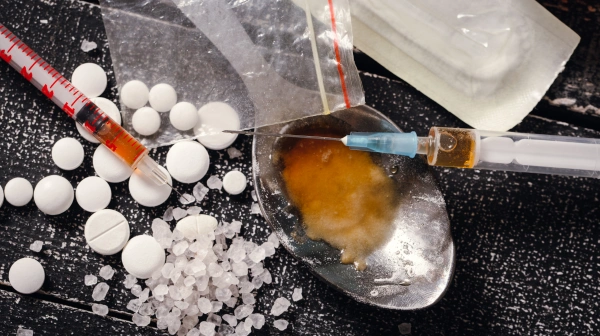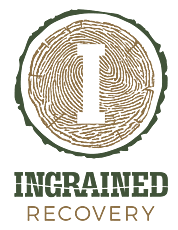The Realities and Dangers of Taking Meth and Xanax Together
Even hours after doing meth, you will still be feeling its effects. As it starts to wear off, you may start to crash and have intense cravings for the drug despite the diminishing pleasure of its effects.
Sleeping it off often appears like the best solution, but you may not be able to do this because you may still be experiencing stimulating mental effects.
At this moment, you may turn to alcohol, marijuana, or even Xanax to take the edge off and help you come down. However, mixing meth and Xanax (or other benzos for that matter) is very dangerous.
There’s no way to know for sure how your body is going to respond, or whether you’ll experience Xanax overdose or respiratory depression once the effects of methamphetamine wear off.
In this guide from Ingrained Recovery, we’ll take a closer look at the risks of mixing meth and Xanax, what withdrawal might look like, and where to turn for support once you decide you’re ready to quit.
Get Accredited Treatment Programs at Ingrained Recovery

Why Mixing Drugs is Extremely Dangerous for Your Health
Any time that you add alcohol or another drug to the equation when using meth, there’s a risk of dangerous consequences. Methamphetamine is an “upper”, meaning it has stimulating effects, and Xanax is a depressant. Some people use benzodiazepines like Xanax or alcohol to “help” with the comedown following a meth binge.
Using the two drugs together sends a lot of mixed signals. Meth raises blood pressure and heart rate, while Xanax slows things down. It’s impossible to know how your body is going to respond, and there’s a risk of stroke, arrhythmias, respiratory depression, and heart attack.
Differential Effects on the Central Nervous System
Using meth floods your brain with dopamine and epinephrine. This creates a sense of euphoria and an energy boost that’s hard to come down from. When you add Xanax into the equation, there’s no way to know how your body is going to respond.
The two drugs have drastically different effects on your central nervous system. Factors like the quantity of each drug, how long it’s been in your system, and your individual tolerance all play a role in how it affects you. The unpredictability of this drug cocktail is what makes it so dangerous.
Increased Risk of Overdose
When meth is still pumping through your body, it’s easy to push worries about taking “too much” Xanax. You likely won’t feel its full effects until you start to come down from using meth. This makes it very easy to overdose, especially if you’re taking Xanax to relax or sleep after a meth binge. Taking both drugs at once, with their confusing signals, can also strain your heart.
Get Proven Detox and Rehab Options at Ingrained

How Xanax Complicates Meth Comedown
What goes up must come down, and stimulants like methamphetamine follow this rule. Meth comedown causes irritability, anxiety, cravings, and eventually, severe fatigue. It’s not uncommon to sleep for long periods to recover after you’ve been using meth, especially once its stimulating effects stop keeping you awake.
When you add Xanax to the mix, it is going to do more than help you sleep. Xanax further complicates your fatigue and mental fog you’ll feel after a binge. Your respiratory system might struggle to function as it normally should. The disorientation that you feel also makes accidents more likely.
Comedowns from Drugs and Your Mental Health
Many people have mood disturbances following a meth binge, including depression, anxiety, mood swings, paranoia, and even psychosis. Mental health issues can last for days or weeks after a meth binge, or even longer if you have a pre-existing mental health condition.
Even though Xanax treats anxiety, manic symptoms, and restlessness, this central nervous system depressant makes low moods significantly worse. It also blunts your ability to feel (and regulate) your emotions. Being able to process your emotions is really important during recovery.
According to the Drug Abuse Warning Network, if you are combining Xanax with alcohol or other depressants, there’s a much greater risk of complications or fatal overdose.
What Methamphetamine Dependence Looks Like
Most people don’t try meth for the first time thinking that they’ll become addicted. You might be offered this powdered substance by a friend, maybe even mistaking it for cocaine. Both drugs are stimulants, but the typical methamphetamine dose lasts much longer.
It creates powerful cravings that are hard to resist, which is the reason someone might binge for days (or longer) without a break in between. Taking too much meth on a regular basis means that you sleep less and less, and increase the chances of manic or paranoid behavior, even for those who are not predisposed to such symptoms.
If you’re worried a loved one is using meth, you may notice a chemical smell (from smoking the drug) or paraphernalia. Long-term meth abuse can also cause skin sores and thinning hair or bald spots (from picking at your skin and head), weight loss, and dental decay known as meth mouth. Being dependent on meth also has severe consequences for your mental health.
Comparing Withdrawal Symptoms of Meth vs Xanax
If you are mixing Xanax with methamphetamine or other drugs regularly, when you do quit, the withdrawal symptoms can be unpredictable. Methamphetamine withdrawal in regular meth users causes intense cravings, irritability, depression, sleep disruptions, and fatigue.
By contrast, Xanax withdrawal causes anxiety, tremors, insomnia, and even seizures. The stark difference between these two drugs and their withdrawal symptoms can lead to unpredictable health risks.
This is also true of many of the other polysubstance abuse combinations that are most commonly encountered in a rehab setting:
Here are some of the most common examples:
-
- Klonopin and alcohol
- Xanax and alcohol
- Xanax and weed
- among many others that are less frequently reported
How an Effective Drug-Alcohol Detox Setting Can Make Withdrawal Safer

When you develop physical dependence from drug abuse, you will inevitably go through withdrawal when you quit. Withdrawal is physically and mentally taxing on its own. When you quit two or more drugs, though, there’s a greater risk of harmful complications and negative side effects.
What to Expect During Detox
In our detox program at Ingrained Recovery, withdrawing from meth and Xanax is a safe choice. We use an individualized approach and 24/7 monitoring during detox. You’ll be watched by medical professionals to monitor you for severe symptoms.
When warranted, your treatment team might prescribe medication to make your withdrawal safer and more comfortable. As an example, oiur clinicians will look at such medications needed to alleviate manic symptoms or help ease anxiety as benzodiazepine intake is tapered and ceased.
For our clients struggling with Xanax dependence alongside methamphetamine use, tapering might be recommended. This approach means that your dose is slowly decreased over time to safely wean dependence off the drug and lower the risk of any dangerous side effects.
The Next Steps in Methamphetamine Addiction Treatment
At Ingrained Recovery, helping you manage withdrawal is only the first step. We also equip our clients with the tools that they need to overcome meth addiction.
You’ll be invited to participate in one-on-one counseling and behavioral therapy, where you’ll start to understand the triggers and why you turned to certain drugs. Therapy can help you develop and strengthen your motivations for getting sober and learn coping skills that benefit mental health and long-term sobriety.
During group therapy, you’ll be able to connect with others and practice some of the skills you’ve learned in therapy. You can also talk about how substance abuse has affected you, among others who understand what you’ve been through. Group therapy helps you prepare to share in support groups and takes you away from the isolation you might be struggling with.
Our clients also participate in recreational therapies, art therapy, meditation or equine therapy on our beautiful campus. Our holistic, but personalized approach also involves building habits that support recovery, from nutritional support and routine building to self-care.
Up To 100% of Rehab Costs Covered By Insurance
Find Support to Overcome All Forms of Drug Use at Ingrained
Polydrug use can be more challenging to overcome than meth addiction on its own, and that’s why it’s so important to have the right support. You’ll find the help that you need at Ingrained Recovery in Eastman, Georgia.
You will also notice how different our program is within minutes of arriving at our beautiful 50-acre campus. We make it easy to break away from the stresses and triggers of the real world, so you can focus on healing.
Call us confidentially today to learn more about program offerings, have your insurance verified, or set up an intake appointment.
